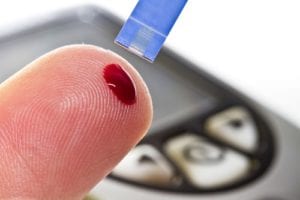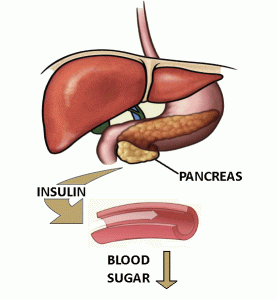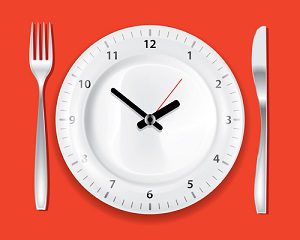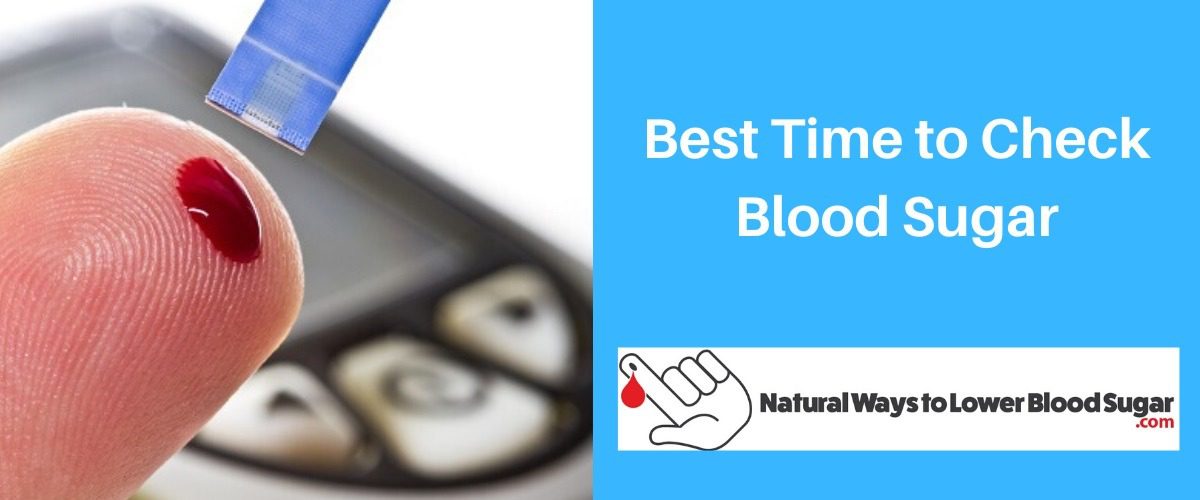It’s extremely important to know the Best Time to Check Your Blood Sugar. If you have diabetes, self-testing your glucose (blood glucose) can be a significant device in dealing with your treatment plan and forestalling diabetes difficulties. You can test your glucose at home with a compact electronic gadget that estimates sugar level in a little drop of your blood. You should always be checking your blood sugars.
Is there a Best Time to Check Your Blood Sugar?
Blood (glucose) observing is the primary instrument you need to check your diabetes control. This check reveals to you your blood glucose level at any one time. For a diabetic it’s the best way to find out what your blood sugars are.

It’s significant for blood glucose levels to remain in a sound range. On the off chance that glucose levels get excessively low, we can lose the capacity to think and function typically.
If they get excessively high and remain high, it can make harm or difficulties the body through the span of numerous years. This is not a good thing!
Keeping a log of your outcomes is crucial. When you convey this record to your social insurance supplier, you have a decent image of your body’s reaction to your diabetes care plan.
To help monitor your dimensions, we should have a printable blood glucose log. We additionally should have a blood glucose log that is little so that you can convey it with you accessible for procurement.
What You Should Know About Diabetes
Diabetes is a metabolic issue that happens when there are large amounts of glucose in the circulatory system. These abnormal amounts of glucose are an after-effect of the body being unfit to create any or on the other hand, enough insulin.
Insulin is a hormone that is delivered by cells in the pancreas; its motivation is to help transport glucose to different cells, which will, at that point, be consumed and utilized for vitality.
On the off chance that there is insufficient insulin being delivered, then the glucose stays in the circulation system, bringing about high blood sugars levels. As per the National Diabetes Statistics Report of 2014, 29.1 million individuals in the United States are living with diabetes (“2014”). This number is staggering to say the least!
Individuals who have diabetes either have an absolute absence of insulin, which is known as type one diabetes or they produce too little insulin or then again are unfit to utilize insulin viably, which is known as type two diabetes. An examination of type 1 and type two diabetes uncovers many likenesses and contrasts in causes, side effects, confusions, and treatment.
The more extreme type of diabetes is type 1, otherwise called subordinate insulin diabetes. Type 1 diabetes is regularly analyzed in youngsters and records for just 5 percent of individuals with diabetes. Type 1 diabetes is an auto resistant sickness in which the body’s insusceptible framework assaults the pancreas and crushes the cells that produce insulin. The cells inside the pancreas are at that point unfit to create any insulin.
Hereditary qualities may assume a job in this infection, bringing about an individual acquiring an inclination to diabetes, which would then be able to be activated by natural factors such as infections.
Like type one diabetes, an individual can acquire an inclination to type 2 diabetes. Type 2 diabetes, otherwise called non-insulin subordinate diabetes, is frequently analyzed in adulthood and represents 95 percent of individuals with diabetes. This is not at all like type one diabetes.
People with type two diabetes can deliver their very own portion insulin; however, the body can’t utilize it viable; this is known as insulin obstruction. Insulin opposition is a condition where the body’s cells become inaccessible with the impacts of insulin.

Therefore, bringing about pancreas investing to work more energy to produce more elevated amounts of insulin. As type two diabetes deteriorates, the pancreas will get exhausted furthermore, will start to make less and less insulin, until it can never again produce any insulin whatsoever.
Who Should Check?
Discuss with your specialist about whether you ought to check your blood glucose. Anyone with diabetes should absolutely be checking their blood sugars. Individuals that may profit by checking blood glucose incorporate those:
- Taking insulin;
- That are pregnant;
- Experiencing serious difficulties controlling blood glucose levels;
- Having low blood glucose levels;
- Having low blood glucose levels without the standard caution signs;
- Have ketones from high blood glucose levels.
Watch the Video Below for More About Checking Your Blood Sugars
Why Test Your Glucose
Glucose testing — or self-checking blood glucose — gives valuable data to diabetes the executives. It can support you:
- Judge how well you’re achieving by and broad treatment objectives;
- See how diet and exercise influence glucose levels;
- See how different elements, for example, sickness or stress, influence glucose levels;
- Screen the impact of diabetes drugs on glucose levels;
- Recognize glucose levels that are high or low.
When to Test Your Glucose

Your specialist will prompt you how frequently you should check your glucose level. All in all, the recurrence of testing relies upon the kind of diabetes you have and your treatment plan.
Type 1 Diabetes
Your specialist may prescribe glucose testing four to 10 times each day if you have type 1 diabetes. You may need to test before dinners and snacks, when working out, before bed, and now and again amid the night.
You may likewise need to check your glucose level all the more regularly if you are sick, change your day by day schedule or start another medicine. It all depends.
Type 2 Diabetes
If you take insulin to oversee type 2 diabetes, your specialist may prescribe glucose testing a couple of times each day, contingent upon the sort and measure of insulin you use.
Testing is typically prescribed before dinner, and at sleep time in case you’re taking many days by day infusions. You may need to test just twice every, prior day breakfast and supper on the off chance that you utilize long-acting insulin. If you oversee type 2 diabetes with non-insulin meds or with eating routine and exercise alone, you should not test your glucose day by day.
Imagine a scenario in which you have a constant glucose screen CGM):
Individuals treated with insulin, especially those with sort one diabetes, may likewise utilize a CGM. These gadgets measure your glucose at regular intervals utilizing a sensor embedded under the skin.
A few gadgets demonstrate your glucose perusing consistently on a beneficiary, and an alert will go off if your glucose is going up or going down too rapidly. Others necessitate that you check your glucose by running the collector over the sensor occasionally.
The vast majority of these gadgets still require finger-stick checks to adjust the machine. Check your gadget’s client manual for learning on the off chance that you have to check, and how regularly you have to do as such.

Realize Your Objective Range:
Your specialist will set target glucose test results to depend on a few elements, including:
- Type and seriousness of diabetes
- Age
- To what extent you’ve had diabetes
- Pregnancy status
- The nearness of diabetes inconveniences
- Generally speaking, well-being and the likelihood of other ailments
For some individuals who have diabetes, Mayo Clinic, for the most part, suggests the accompanying target glucose levels before supper:
- Somewhere in the range of 80 and 120 milligrams for every deciliter (mg/dL) for individuals age 59 and more youthful who have no other fundamental ailments.
- Somewhere in the range of 100 and 140 mg/dL for individuals age 60 and more seasoned, or for the individuals who have other ailments, for example, heart, lung or kidney illness or decreased capacity to detect low glucose levels (hypoglycemia mindfulness).
For some individuals who have diabetes, the American Diabetes Association, by and large, suggests the accompanying target glucose levels:
- Somewhere in the range of 80 and 130 mg/dL (4.4 and 7.2 mmol/L) before dinner
- Under 180 mg/dL (10.0 mmol/L) two hours after dinner
Step by Step Instructions to Test Your Glucose
Glucose testing requires the utilization of a little electronic gadget called a glucometer. The meter peruses the measure of sugar in a little example of blood, as a rule from at the tip of your finger, that you place on a dispensable test strip. Your specialist or diabetes instructor can suggest a fitting gadget for you.
Your specialist or diabetes instructor can likewise enable you to figure out how to utilize a meter.
Adhere to the guidelines that accompany your glucose meter. As a rule, here’s how the procedure works:
- Wash and dry your hands well.
- Supplement a test strip into your meter.
- Prick the side of at the tip of your finger with the needle (lancet) furnished with your test pack.
- Tenderly crush or back rub your finger until a drop of blood pops.
- Contact and hold the edge of the test strip to the drop of blood.
The meter will show your blood glucose level on a screen following a couple of moments.

In the event that your meter can test blood taken from a substitute site, for example, the lower arm or palm, it’s imperative to comprehend that these readings may not be as exact as readings from the fingertips, particularly after a feast or amid exercise when glucose levels change all the more as often as possible.
Recording Your Outcomes
Converse with your specialist about how frequently you have to record your glucose results. Numerous gadgets would now be able to be downloaded to a PC.
When you physically log your outcomes, record the date, time, test results, drug and portion, and diet and exercise data. Carry your record of results with you to all meetings with your specialist. Converse with your specialist about what to do and when to call when you get results that don’t fall inside the scope of your measurable objectives.
Staying Away from Issues with Meter Utilization
Glucose meters should be utilized and kept up appropriately. Pursue these tips to guarantee legitimate use:
- Pursue the client manual for your gadget — methodology may change, starting with one gadget then onto the next.
- Utilize a blood test measure as coordinated in the manual.
- Utilize just test strips intended for your meter.
- Store test strips as coordinated.
- Try not to utilize terminated test strips.
- Clean the gadget and run quality-control checks as coordinated.
- Convey the meter to your physical checkups to deliver any inquiries and to exhibit how you utilize your meter.
What Do My Results Mean?
When you complete the blood glucose check, record your outcomes, and audit them to perceive how nourishment, movement, and stress influences your blood glucose. Investigate your blood glucose record to check whether your dimension is excessively high or too low a few days straight at about a similar time.
If something very similar continues occurring, it may be an ideal opportunity to change your arrangement. Work with your specialist or diabetes instructor to realize what your outcomes mean for you. This requires some serious energy. Ask your specialist or medical attendant on the off chance that you should report results out of a specific range without a moment’s delay by telephone.
Remember that blood glucose results frequently trigger stable sentiments. Blood glucose numbers can make you irritated, bewildered, baffled, furious, or down. It’s anything but difficult to utilize the numbers to pass judgment on yourself. This is the best way to lower your blood sugar and it really works!
Advise yourself that your blood glucose level is an approach to follow how well your diabetes care plan is working. It’s anything but a judgment of you as an individual. The outcomes may indicate you need an adjustment in your diabetes plan.
Urine Checks for Glucose?
Urine checks for glucose are not as precise as blood glucose checks and should possibly be utilized when blood testing is outlandish. Urine checks for ketones, in any case, is significant when your diabetes is wild or when you are wiped out. Everybody with diabetes should realize how to check urine for ketones.
In Conclusion
Best Time to Check Your Blood Sugar is 15 minutes before a meal or two hours after a meal. You want to check your glucose level in the morning and at bedtime at night. You should be checking your blood sugar even more often depending on your situation. Of course it’s imperative that you discuss all of this with your doctor first.
- Amazon Kindle Edition
- Rothchild, Sascha (Author)
- English (Publication Language)
- 336 Pages - 04/19/2022 (Publication Date) - G.P. Putnam's Sons (Publisher)
- ✅ QUICK AND EASY TO USE: Care Touch blood sugar test kit delivers results in only 5 seconds with just a 0.5µL blood sample. There is no programming needed since our blood sugar monitor kit automatically recognizes batch codes encrypted on Care Touch glucose test strips. Our state-of-the-art glucometer kit with strips and lancets includes single-touch strip ejection, so you can hygienically remove used diabetic test strips.
- ✅ EASY DIABETIC MONITORING: The blood sugar monitor kit with strips is capable of saving up to 300 readings. The blood glucose test kit also provides a continuous 14-day average of your readings, making glucose monitoring easy for you and your healthcare provider.
- ✅ PORTABLE AND HASSLE-FREE: The diabetic testing kit comes with a handy glucometer case, which means you can check your blood sugar level at home or anywhere else while staying organized. The 10-depth lancing device and lancets will help make blood sugar testing almost painless and hassle-free.
- ✅ COMPLETE DIABETIC SET: The glucose meter kit with strips and lancets includes: (1) Care Touch Blood Sugar Meter, (100) Blood Glucose Test Strips for diabetes, (1) Lancing Device, (100) Lancets for diabetes testing, (1) 3 Volt Lithium Battery, (1) Glucose meter case for your blood sugar tester and diabetic supplies
- ✅ WE CARE BECAUSE YOU CARE: You care about your health, and we care about you. Care Touch is committed to providing the best quality blood glucose monitoring systems. Our care doesn’t end when your sugar tester diabetes kit arrives at your door. We’re fully dedicated to your satisfaction. If you have any questions or concerns about your glucose monitor kit with strips and lancets - contact us at any time.
- Amazon Prime Video (Video on Demand)
- English (Playback Language)
- English (Subtitle)
- PUREHEALTH RESEARCH - Blood Sugar Formula 3 Bottles
- MANUFACTURED in the USA! 365-DAY SATISFACTION GUARANTEED!
- A DOCTOR-APPROVED NATURAL FORMULA. Seventeen potent ingredients, each scientifically proven to have a significant effect at helping balance your glucose levels, improve glucose sensitivity, protect delicate cells from free radicals, and energy
- HIGH POTENCY. PureHealth Research experts scientifically enhance CHROMIUM with the Vitamin C, E, Mulberry Leaf, Bitter Melon, Cinnamon, L-Taurine, Berberin and other ingredients which are proven to help you support healthy blood glucose levels
- ONE CAPSULE DAILY, THREE BENEFITS: supports healthy sugar and carb absorption, supports insulin levels, supports cardiovascular health
- Scientifically formulated; great care was put into combining just the right amount of 20 different ingredients into a premium formula designed to support healthy blood sugar levels
- High potency support for 365 days a year; the unique combination in this blend is crafted to help support healthy glucose absorption and glucose production by your body; contains Gymnema, Alpha Lipoic Acid, Yarrow, Licorice, Cayenne, Banaba, Guggul, Bitter Melon, Juniper Berry, White Mulberry, L-Taurine & more
- One capsule twice a day, five benefits; (1) supports normal blood sugar levels; (2) supports weight control and energy; (3) supports healthy sugar and carb absorption; (4) supports insulin levels; (5) supports heart health; daily support for healthy blood glucose levels, 365 days a year
- Reliable; made in a GMP certified facility in America and third party safety tested for purity
- Great value for money; 120 vegetarian capsules for a 60 days supply
Last update on 2022-06-23 / Affiliate links / Images from Amazon Product Advertising API












I became aware of checking blood sugar levels when my grandpa had to take insulin to lower his blood sugar, I was the watcher in the hospital back then. I’m actually quite fascinated by the device they used to track it, but not amazed by the price of the ones the doctor is recommending!
But of course, there’s no reason to believe that adults are the only ones who should monitor their blood glucose levels. Even so, I don’t feel like considering tracking to be a part of my everyday habit. I guess I just have to avoid putting too much sugar into my body or else I too will become a diabetic.
Hey Dominic,
Checking your blood sugar when you’re a diabetic is absolutely essential.
There are certain times that your sugar should be checked and the cost of a monitor is well worth knowing what your sugars are at any given time.
Anyone with diabetes or even prediabetes must check their glucose levels.
Since you aren’t diabetic you don’t have to monitor your blood sugars but you should be eating healthy so as to not become diabetic.
Appreciate your feedback. Thanks!
Thanks for such detail on diabetes in general. I knew there were 2 types, but it was helpful to know why. I work in a hospital setting as a social worker with many elderly folks with diabetes who are either on pills or insulin. Your article gave me a good overview about testing that I can pass on to them when I’m teaching about various parts of their daily living routine. It’s definitely not a fun disease to have, but if you treat it well and take care of yourself, it is very manageable.
Hi Stacey 🙂
You’re welcome! You’re right in that diabetes can be managed.
The most important thing is to check your blood sugars frequently and when you check them is crucial.
Checking 15 minutes before a meal and two hours after are the best times to check your levels.
Thank you for passing on this article because it’s that important for folks to know.
Thank you for your comments 🙂
Hi Rob,
Thanks for such a clear and concise article. I was diagnosed with Type 2 about 2 months ago, here in the UK it appears we don’t routinely give out blood monitors but given I have an MS diagnosis and my movements are limited. I use a wheelchair, or have for about 4 years now, I though it was important to “keep an eye on things”, before they spiral out of control. I return single figure mmol/L. I can’t do the level of exercise that I used too because of the MS, I have a sub 4 hour marathon time to my name and used to take part in endurance cycling, I can’t even ride a bike now because of developed ataxia. I do however have a peloton that I use, but it is a careful balancing act of exercise and total wipe-out.
Hi Richard,
You’re so welcome! Sorry to hear about your diagnosis. You can only try your best. Even some exercise is beneficial.
As far as checking your blood sugar, it’s best to check 2 hours before a meal or 2 hours after. I wish you the best of health and I’m sure that my website can help you. Look around 🙂 Thank you!